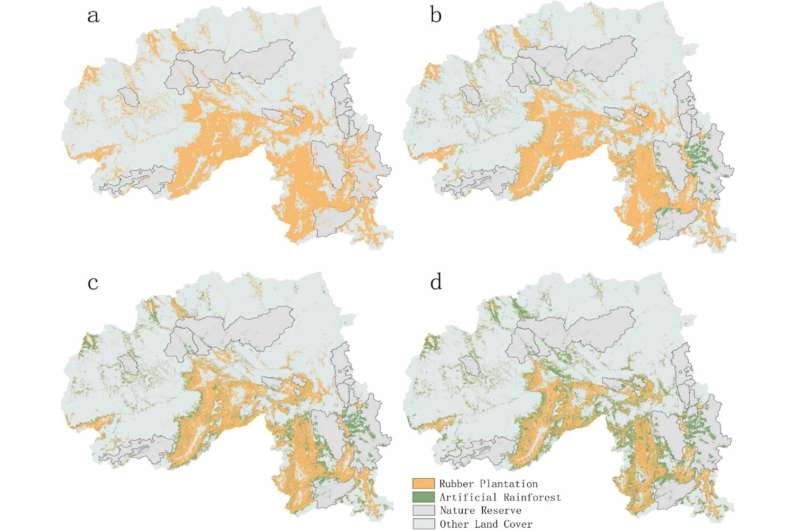This article has been reviewed according to Science X's editorial process and policies. Editors have highlighted the following attributes while ensuring the content's credibility:
fact-checked
trusted source
proofread
Researchers develop new payment system to support reconversion of rubber plantations

Researchers from Xishuangbanna Tropical Botanical Garden (XTBG) of the Chinese Academy of Sciences and their collaborators have developed a theoretical combined payment system of market and government to simulate the reconversion dynamics of rubber plantations to artificial rainforests.
The study was published in Global Ecology and Conservation on Feb. 24.
With many forests converted to rubber plantations, Xishuangbanna has experienced a tremendous forest cover loss over past decades. Various measures have been discussed to foster reconverting rubber plantations back into close-to-nature rainforests. Some studies have suggested that payments for ecosystem services (PES) from the government should be made to landowners. However, PES solely from government usually fail to outcompete the profit that smallholders expect to gain from rubber production.
The researchers developed a system that aims at setting incentives for farmers to convert rubber plantations into artificial rainforests, which are meant to resemble natural rainforests and support the provision of ecosystem services. The combined market and government payment system splits PES into two parts: the economic benefit that rubber farmer earn from market-priced ecosystem services and compensation payments from the government.
The researchers carried out a simulation study from 2020 to 2050 in Xishuangbanna to evaluate the potential impacts of the system. Considering that an intensively managed rubber plantation cannot be converted into a natural rainforest in the short term, they chose artificial rainforest as the target ecosystem for reconverted lands.
In the baseline simulation, by 2050, most of the small patches would disappear due to low yield and small patch-first reconversion strategy, a total government payment of US$0.377 billion in net present value (NPV) would encourage 50% reconversion of rubber plantations in Xishuangbanna, and the total carbon sequestration from the reconversion could reach 14,830,000 (tC).
Sensitivity analyses revealed that rubber price was the most sensitive factor on the total NPV of compensatory payments, which was followed by the discount rate.
"This new integrated payment system holds the potential of stimulating restoration of cash crop monoculture-dominated landscapes to multifunctional forest ecosystems," said Song Liang from XTBG, corresponding author of the study.
More information: Wei-Guo Liu et al, Encouraging the reconversion of rubber plantations by developing a combined payment system, Global Ecology and Conservation (2023). DOI: 10.1016/j.gecco.2023.e02415
Provided by Chinese Academy of Sciences





















